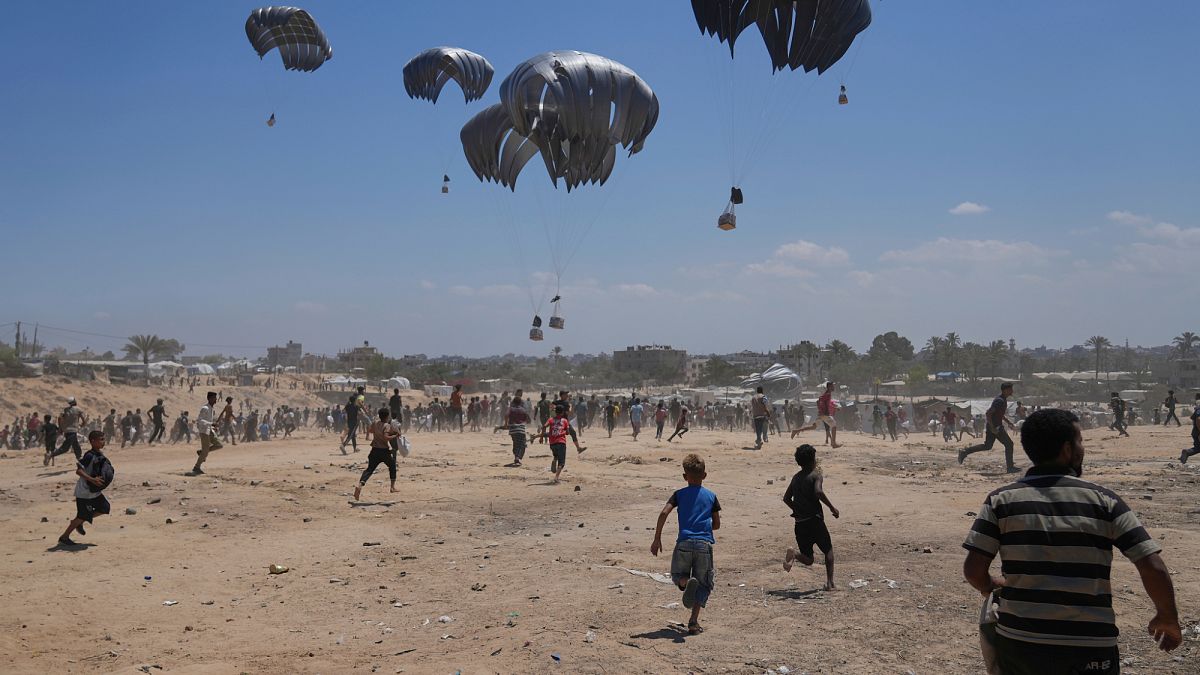

In the ever-evolving situation of the central Gaza Strip, both hope and uncertainty intersect as humanitarian aid continues to airdrop into the region amidst an escalating conflict. On Monday, crowds gathered to retrieve these aid parcels, which descended through the skies into challenging areas marked by militarization. The urgency of securing these essentials underscores the dire need for sustenance and relief among the residents, who face ongoing struggles due to shortages of essential supplies.
Reports indicate that aid shortages and rising famine have prompted intense efforts to organize these distributions. The images emerging from the area capture scenes of chaos and desperation, as many rush to secure the parcels, brave in their determination to provide for their families. Each parcel represents a small beacon of relief in an environment marked by adversity.
Simultaneously, the geopolitical stage is fraught with tension, as Israeli Prime Minister Benjamin Netanyahu prepares for strategic decision-making amid a backdrop of complex security challenges. Reports reveal that Netanyahu has convened a security cabinet meeting to deliberate potential expansion plans for the occupation of Gaza. This strategic gathering has become crucial as further civilian casualties are reported, highlighting the critical nature of these discussions.
While the spotlight is on these poignant developments, Israel’s plans have sparked varied reactions both internally and externally. An anticipated cabinet discussion over the possibility of a full occupation has been postponed. This delay comes amid differing opinions on the feasibility of such an extensive offensive move, reflecting the cautious tones among officials and analysts alike regarding the best path forward after nearly two years of conflict with Hamas.
Adding to this multifaceted situation, the humanitarian dimension continues to reflect the global effort to mitigate suffering. In a heartening move, the United Kingdom has pledged to offer sanctuary to over 100 critically ill and injured children from Gaza by providing them with urgent medical care. This initiative underscores a concerted attempt to reflect compassion and extend assistance beyond immediate borders, striving to alleviate some of the human cost resulting from the ongoing conflict.
The proposed evacuation offers a glimpse of hope amidst the hardships faced by the local populace. Charities have praised this commitment and implored for swift action to execute the plan, emphasizing the pressing need to address the medical and humanitarian requirements of these vulnerable children promptly. The announcement by the UK Government comes as a comforting reassurance of international solidarity.
In the meantime, supporting these humanitarian efforts and navigating the intricate political terrain are tasks that demand patience and thoughtful deliberation. Within this complex landscape, each step taken—whether through coordinated aid distribution, diplomatic dialogues, or medical evacuations—contributes to the overarching tapestry of responses aimed at easing tensions and promoting peace and well-being in a turbulent region.
The intersections of aid, politics, and humanity remind us of the enduring challenges and the possibilities for hope that characterize the situation in Gaza. As this narrative unfolds, the world watches, mindful of the potential for positive change, yet remains cognizant of the profound experiences impacting the lives of those on the ground.
Source: {link}
